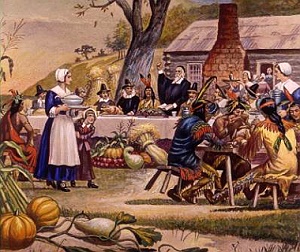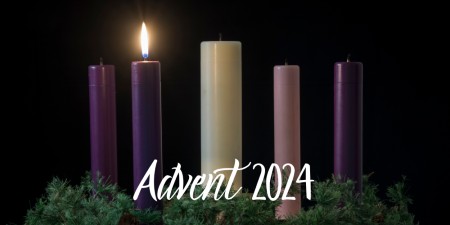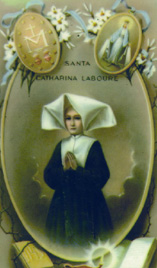 Dear readers, Catholic Online was de-platformed by Shopify for our pro-life beliefs. They shut down our Catholic Online, Catholic Online School, Prayer Candles, and Catholic Online Learning Resources—essential faith tools serving over 1.4 million students and millions of families worldwide. Our founders, now in their 70's, just gave their entire life savings to protect this mission. But fewer than 2% of readers donate. If everyone gave just $5, the cost of a coffee, we could rebuild stronger and keep Catholic education free for all. Stand with us in faith. Thank you. Help Now >
Dear readers, Catholic Online was de-platformed by Shopify for our pro-life beliefs. They shut down our Catholic Online, Catholic Online School, Prayer Candles, and Catholic Online Learning Resources—essential faith tools serving over 1.4 million students and millions of families worldwide. Our founders, now in their 70's, just gave their entire life savings to protect this mission. But fewer than 2% of readers donate. If everyone gave just $5, the cost of a coffee, we could rebuild stronger and keep Catholic education free for all. Stand with us in faith. Thank you. Help Now >
Fr. Randy Sly on Thanksgiving and Our Roots of Faith
FREE Catholic Classes
Thanksgiving Day has become a time when we watch parades and then take in large amounts of food and football. According to some calculations, 46 million turkeys-around 550 million pounds-will be consumed during Thanksgiving this year. But that's not how it began!

Ceremonies and periods of thanksgiving are woven through the entire tapestry of history. We find them in the Jewish Calendar of Feasts, in other world religions, in European cultures and native practices of North America, South America, Asia and Africa.
Highlights
Catholic Online (https://www.catholic.org)
11/28/2024 (Now)
Published in U.S.
Keywords: Thanksgiving, American faith, roots of faith, religious heritage, Thanksgiving Day, Ordinariate, Fr Randy Sly
WASHINGTON, DC (Catholic Online) - Turkey, dressing and pumpkin pie are the standards for a typical American Thanksgiving. But how about bean soup?
Americans typically look back to 1621 as the first recorded Thanksgiving, where the Plymouth colonists and Wampanoag Indians gathered for a three-day feast of Thanksgiving to God for the harvest.
A detailed description of the First Thanksgiving can be found in "A Journal of the Pilgrims at Plymouth," written by Edward Winslow in 1621:
"Our harvest being gotten in, our governor sent four men on fowling, that so we might after a special manner rejoice together after we had gathered the fruit of our labors. They four in one day killed as much fowl as, with a little help beside, served the company almost a week.
"At which time, among other recreations, we exercised our arms, many of the Indians coming amongst us, and among the rest their greatest king Massasoit, with some ninety men, whom for three days we entertained and feasted, and they went out and killed five deer, which they brought to the plantation and bestowed upon our governor, and upon the captain, and others.
"And although it be not always so plentiful as it was at this time with us, yet by the goodness of God, we are so far from want that we often wish you partakers of our plenty."
A Florida elementary school teacher, Robyn Gioia, however, has been waging a campaign to honor another Thanksgiving - though not a harvest festival - that took place in Saint Augustine, FL on September 8, 1565, fifty-six years before Plymouth.
On that day, Spanish explorer Pedro Menendez de Aviles and 600 Spanish settlers celebrated a Mass of Thanksgiving for their safe arrival in the New World and then held a feast of bean soup with Timucua Indians.
Another Mass of Thanksgiving, not connected to harvest, was celebrated by the expeditionary party of Don Juan de Onate on April 30, 1598.
Historically, Thanksgiving was viewed as a holy day more than a holiday, where society ceased from their work and gave thanks to God for all His goodness. Faith, not football, was the focus of the day. It was a day of worship and a family meal where the bounteous goodness of the Lord's provision was remembered.
The first official proclamation on Thanksgiving took place in Charlestown, Massachusetts on June 20, 1676, when the city council set June 29 as a day of thanksgiving.
A little over 100 years later the first presidential proclamation was made as President George Washington, on October 3, 1789, declared Thursday, November 26 at a day of Thanksgiving.
A portion of his proclamation reads: "Now therefore I do recommend and assign Thursday the 26th day of November next to be devoted by the People of these States to the service of that great and glorious Being, who is the beneficent Author of all the good that was, that is, or that will be-- That we may then all unite in rendering unto him our sincere and humble thanks--for his kind care and protection of the People of this Country previous to their becoming a Nation--for the signal and manifold mercies, and the favorable interpositions of his Providence."
When he established the day as an annual tradition in 1863, President Abraham Lincoln continued to remind America that Thanksgiving was a time to remember God and His goodness and established the day on the last Thursday of November.
Still in the midst of a great Civil War, which the president acknowledged in his proclamation, Lincoln wrote:
"The year that is drawing towards its close, has been filled with the blessings of fruitful fields and healthful skies. To these bounties, which are so constantly enjoyed that we are prone to forget the source from which they come, others have been added, which are of so extraordinary a nature, that they cannot fail to penetrate and soften even the heart which is habitually insensible to the ever watchful providence of Almighty God."
Then, in 1939 President Franklin D. Roosevelt broke ranks with his predecessors and declared the fourth Thursday in 1939 and the third Thursday in 1940 and 1941 as the day. Congress intervened in 1941 and officially declared the fourth Thursday of November as Thanksgiving.
Thanksgiving Day was not an American invention. Ceremonies and periods of thanksgiving are woven through the entire tapestry of history. We find them in the Jewish Calendar of Feasts, in other world religions, in European cultures and native practices of North America, South America, Asia and Africa.
Many believe that the Pilgrims brought the idea with them from Europe, while Native Americans also observed special days to honor a good harvest.
For Catholics, thanksgiving is a daily and weekly occurrence through the Mass, where the Eucharistic Sacrifice is our Great Thanksgiving. Special offerings, such as the Mass in St. Augustine in 1598 served to heighten our awareness of God's hand in our lives.
Today, Thanksgiving has become more of a day we begin by watching parades and then take in large amounts of food and football. According to some calculations, 46 million turkeys-around 550 million pounds-will be consumed during Thanksgiving this year. [Ironically, during early days of our nation Benjamin Franklin wanted to have the turkey declared our national bird.]
The American Automobile Association (AAA) estimates that some 38.4 million travelers will hit the road or the skies during the Thanksgiving holidays, with around 80 percent traveling by car.
Catholics are called to redeem the day as a time of thanksgiving by attending Mass and having prayer together as family and friends.
The United States Conference of Catholic Bishops published two prayers that Catholic families can use to capture the true heart of a day of thanksgiving. The shorter prayer follows and both can be downloaded at the USCCB publishing website .
"Lord, we thank you
for the goodness of our people
and for the spirit of justice
that fills this nation.
We thank you for the beauty and fullness of the
land and the challenge of the cities.
We thank you for our work and our rest,
for one another, and for our homes.
We thank you, Lord:
accept our thanksgiving on this day.
We pray and give thanks through Jesus Christ our Lord.
R/. Amen."
-----
Father Randy Sly is a priest with the Personal Ordinariate of the Chair of St. Peter (http://usordinariate.org) established by the Holy Father, Pope Benedict XVI, through the Apostolic Constitution Anglicanorum Coetibus. He is the chaplain of the St. John Fisher Ordinariate Community, a priest in residence at Our Lady of Hope Catholic Church and Director of Pro-Life Activities for the Ordinariate. He is Chaplain to the Common Good movement and a popular speaker for parishes, apostolates and Christian organizations.
---
'Help Give every Student and Teacher FREE resources for a world-class Moral Catholic Education'
Copyright 2021 - Distributed by Catholic Online
Join the Movement
When you sign up below, you don't just join an email list - you're joining an entire movement for Free world class Catholic education.
-

-
Mysteries of the Rosary
-
St. Faustina Kowalska
-
Litany of the Blessed Virgin Mary
-
Saint of the Day for Wednesday, Oct 4th, 2023
-
Popular Saints
-
St. Francis of Assisi
-
Bible
-
Female / Women Saints
-
7 Morning Prayers you need to get your day started with God
-
Litany of the Blessed Virgin Mary
Daily Catholic
 Daily Readings for Thursday, November 28, 2024
Daily Readings for Thursday, November 28, 2024 St. Catherine Laboure: Saint of the Day for Thursday, November 28, 2024
St. Catherine Laboure: Saint of the Day for Thursday, November 28, 2024 The Salve Regina (Hail Holy Queen): Prayer of the Day for Thursday, November 28, 2024
The Salve Regina (Hail Holy Queen): Prayer of the Day for Thursday, November 28, 2024- Daily Readings for Wednesday, November 27, 2024
- St. James Intercisus: Saint of the Day for Wednesday, November 27, 2024
- Prayer to Saint Anthony of Padua: Prayer of the Day for Wednesday, November 27, 2024
![]()
Copyright 2024 Catholic Online. All materials contained on this site, whether written, audible or visual are the exclusive property of Catholic Online and are protected under U.S. and International copyright laws, © Copyright 2024 Catholic Online. Any unauthorized use, without prior written consent of Catholic Online is strictly forbidden and prohibited.
Catholic Online is a Project of Your Catholic Voice Foundation, a Not-for-Profit Corporation. Your Catholic Voice Foundation has been granted a recognition of tax exemption under Section 501(c)(3) of the Internal Revenue Code. Federal Tax Identification Number: 81-0596847. Your gift is tax-deductible as allowed by law.








 Daily Readings for Thursday, November 28, 2024
Daily Readings for Thursday, November 28, 2024 St. Catherine Laboure: Saint of the Day for Thursday, November 28, 2024
St. Catherine Laboure: Saint of the Day for Thursday, November 28, 2024 The Salve Regina (Hail Holy Queen): Prayer of the Day for Thursday, November 28, 2024
The Salve Regina (Hail Holy Queen): Prayer of the Day for Thursday, November 28, 2024

